When it comes to travel styles, Jessica and I are walkers at heart. When arriving in a new city, our first instinct is to don a comfortable pair of shoes, slap a Fitbit on our wrists, and bring up the nearby restaurants and attractions on our radar (read: Google Maps) to plot out an optimal route. After all, travel is about satisfying our curiosities, and no means of movement quenches that particular craving quite as authentically as our own two feet.
My admittedly hurried research before this trip had led me to the knowledge that if there’s ever a perennial “city of neighbourhoods”, Buenos Aires is it. What the city lacks in world-renowned tourist attractions, it more than makes up for in its strikingly diverse barrios, each offering their own takes on life in the Argentine capital. It was the perfect setting for us to add some new wrinkles to our walking shoes.
Saturday – Recoleta
We stopped by our hotel for a quick shower before heading out to check out Recoleta, a posh neighbourhood that’s perhaps best known for the sprawling cemetery that lies on its doorstep. Indeed, covering just under 55,000 sqm, the La Recoleta Cemetery provides a final resting place to some of the most important figures throughout Argentina’s history.

La Recoleta Cemetery
After a casual steak lunch at the La Biela Café opposite, or a quick bite from the street vendors outside the cemetery gates, take your time to wander through the criss-crossing pathways in this massive complex of ornate tombs. See if you can find the resting place of Eva Perón (or “Evita” as she’s affectionately known), the country’s passionate First Lady from 1948 until her death in 1952, and a huge part of the Argentina’s collective consciousness. Other notable figures buried here include former presidents, writers, physicians, philanthropists, and academics.
Basically, if you’re Argentine, you die either with the greatest mark of honour if you’re buried here, or with mad postcode envy if not.
Some of the tombs in La Recoleta Cemetery are perhaps better described as mausoleums, their multi-storey burial chambers adorned with elaborate designs and sculptures on the outside. The pathways seem to stretch on endlessly and pretty much no two burial vaults look the same, making it a wonderful place for an eye-opening midday stroll.


Later in the afternoon, we swapped outdoor for indoor on our culture crawl, heading to the Museo de las Bellas Artes to look at one of Latin America’s largest public art collections. On the way, we stopped by the Centro Cultural Recoleta, which regularly plays host to special exhibitions and art installations, and on this day there was a particularly striking exhibit known as Naturaleza Muerta (“Still Life”) that examined a host of social issues in creative ways.
Stepping out into the Buenos Aires sunset, we made for our final stop of the evening, the El Ateneo Grand Splendid – once ranked as the second most beautiful bookshop in the world. Its vast collection of books is housed in a converted grand theatre, with many of the architectural details still in place. The main stage has now turned into a cafe; theatre boxes into reading nooks. It’s well worth a visit.
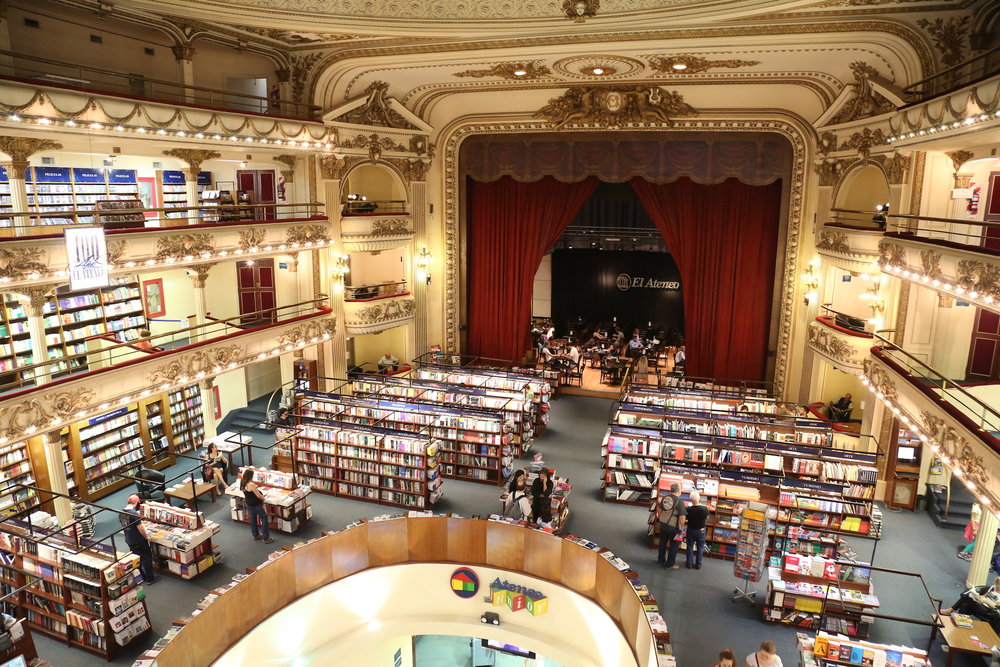
El Ateneo Grand Splendid
Sunday – San Telmo
There aren’t many more quintessential porteño experiences than coming to San Telmo for its world-renowned Sunday market. This historical part of town blends beautiful rustic architecture with a distinct Bohemian vibe, holding much of the city’s collective stories within its cobblestone streets, courtyards, and tunnels. On Sundays, its main drag, Calle Defensa – so named as the main site of the Argentine defence against the British Invasion in 1806 and 1807 – fills up with locals and tourists alike browsing the endless market stalls.
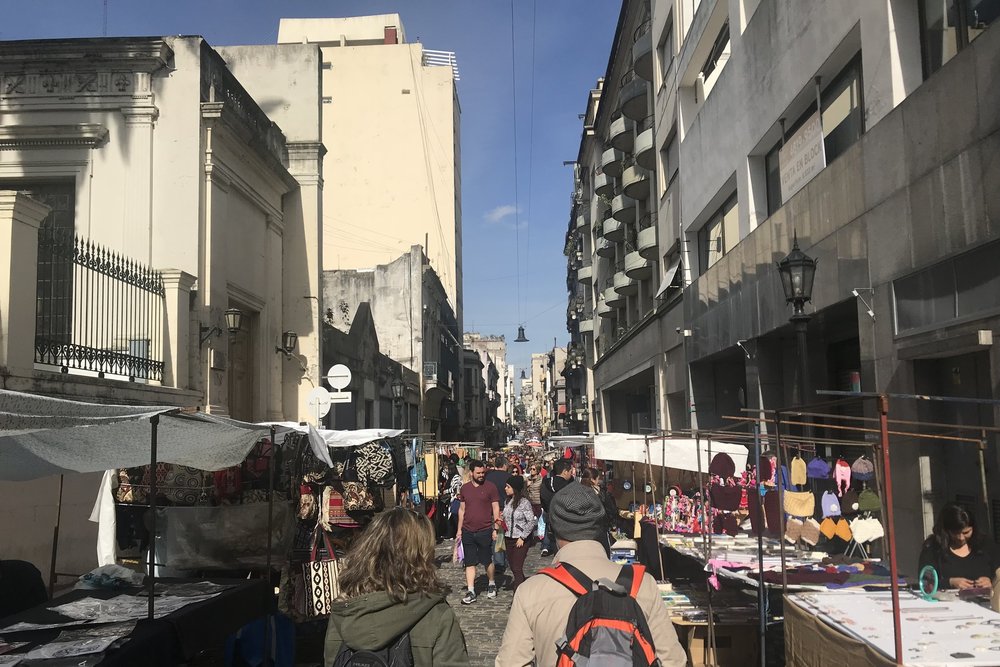
San Telmo, Buenos Aires
Get yourself a coffee and a medialuna (sweet croissants) to satisfy your belly, an artisanal mate gourd to quench your thirst, and a few sticks of incense to nourish the spirit. Meander through the stalls along with the crowd, and whatever you’re looking for – even if it’s nothing at all – you’ll find something here to make your visit worthwhile.
We walked up and down the market a few times before stopping at one of the many cafes along the side streets to rest our feet. After that, we headed to El Zanjón de Granados, a museum with an unassuming exterior along Calle Defensa that actually takes you down to the mysterious tunnels underneath the city that served as drainage canals back in the 18th century and were only excavated in recent years. Run your fingers along the exposed brick to get a unique feel for San Telmo, the oldest part of the original settlement here in Buenos Aires.
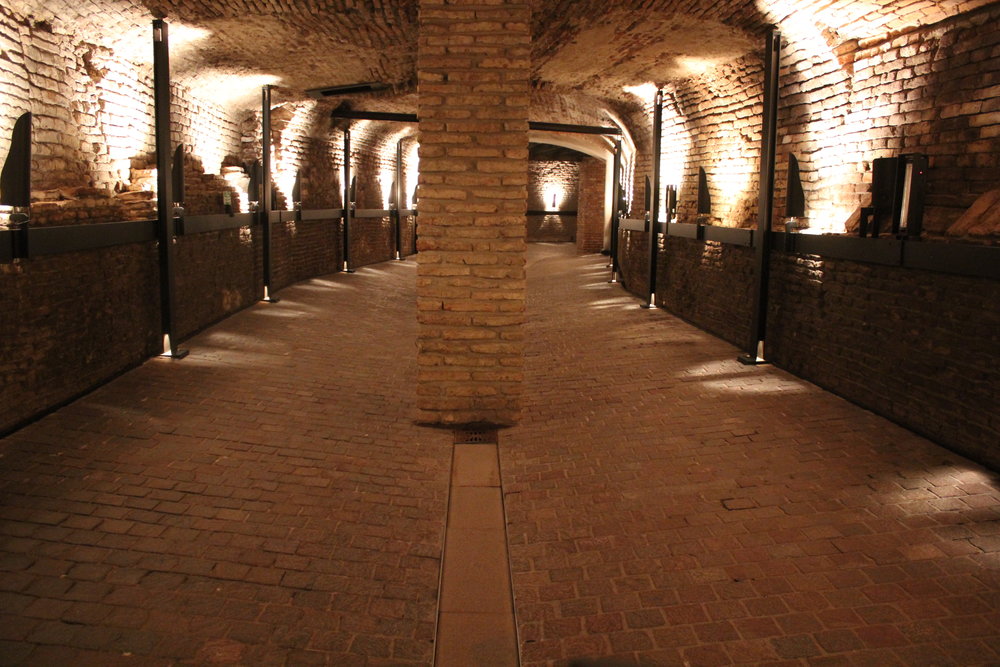
El Zanjón de Granados
As the clock struck dinner hour, we made for La Brigada, a veritable San Telmo institution and a fine spot for some Argentine steak and wine. A full meal here in one of the city’s landmark parrillas (steakhouses), amidst impeccably dressed waiters and dozens of local football kits adorning the walls, cost the two of us only about AR$1500 (~$80) including the wine.
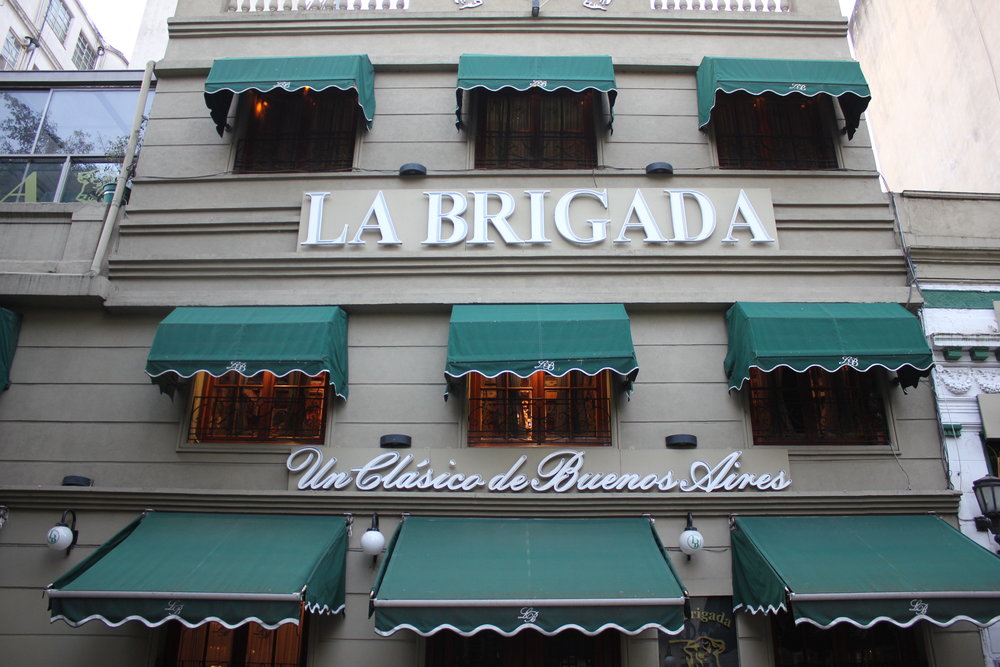
La Brigada
We started with some chilled marinated eggplant, kicked off the feast with the matrimonio chorizo y morcilla (a “marriage” of pork sausage and blood sausage), achieved meat lover Nirvana with the ojo de bife (ribeye steak), and of course washed it all down with a glorious bottle of 2014 Malbec. Oh, and don’t forget the chorizo de jabalí (wild boar sausage), whose delightfully gamey taste will leave you craving seconds.
I’ll take this moment to briefly comment on the food here in general. A visit to Buenos Aires is often touted as an elevated gastronomic experience, and if you’re fiercely carnivorous (like myself) you will indeed have the time on your life gorging on inexpensive yet amazing steaks. It’s unmistakably Argentina – they even serve steak in food courts!
However, if you aren’t a very enthusiastic meat eater and instead prefer fruits and vegetables in your diet (like Jessica) then you might find yourself a little unimpressed by the sixth time you sit down at a restaurant, flip open the menu, and see a solitary “green salad” of lettuce and tomatoes listed alongside dozens upon dozens of grilled meats. If this describes you, make sure to look for the parrillas that serve grilled vegetables as well. And if all else fails, well, just stick to the wine 😉
Monday – La Boca & Balvanera
The crowds of people filtered back into their workplaces as we made our way for La Boca, so named for its location on the mouth of the river at Buenos Aires’s southern edge. It’s quite the haul from the more central areas and also slightly more of a downbeat neighbourhood than the others, so we took an Uber to get us there before commencing our walk around the streets.
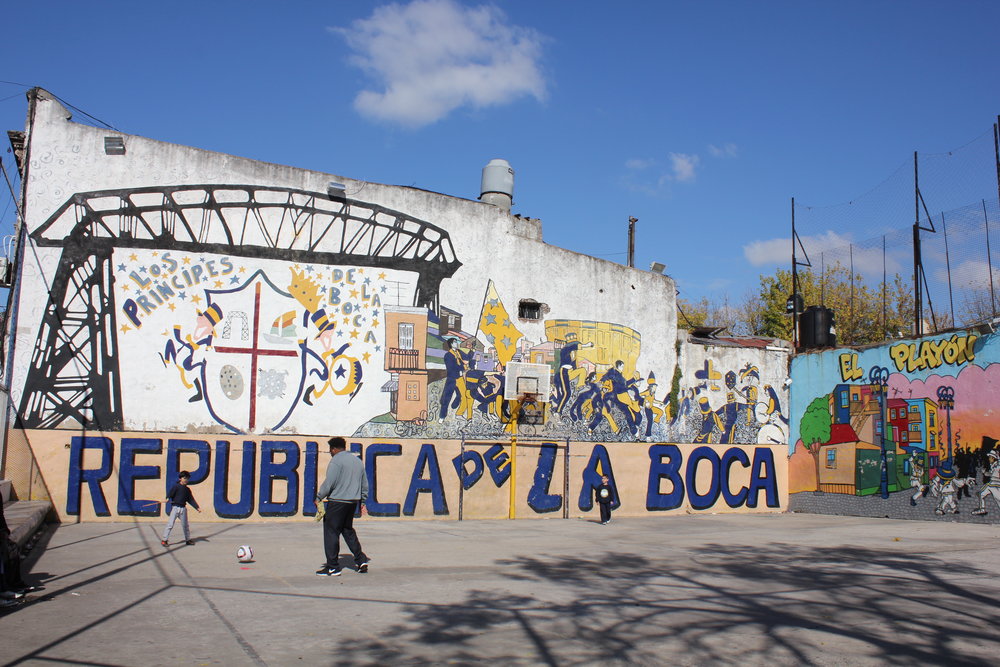
La Boca, Buenos Aires
La Boca is an interesting place. Historically a lower-class barrio consisting solely of the shipyards nearby and the workers who plied their trade there, the area was transformed when, in 1960, a local artist decided to paint the walls along two semi-abandoned streets with vivid colours. El Caminito was born, and the tourists quickly descended upon it.
Truthfully, El Caminito is certainly where every Buenos Aires tourist comes for their Instagram pic (I’m of course no exception), but if you’re on a time crunch, this place is entirely skippable. It basically consists of two colourful streets in a V-shape and a few public squares with eye-catching street art, so you’ll be done here in about 20 minutes anyway.
If you do make it down, you may find the open-air tango performances to be a riveting watch, but be careful – if the performers manage to get a hold of your hand, you’ll be paying a handsome chunk of change for the privilege of being taught a few quick steps.

If you’re an avid football fan like me, a place that’s decidedly not skippable is La Bombonera, the iconic stadium that lies a few blocks away. Simply walk north from El Caminito and watch the scenery around you slowly morph into a sea of blue and yellow.

Before you know it, you’ve arrived at the home of Boca Juniors, Argentina’s most decorated club. Check out the club museum or join one of the hourly stadium tours to delve into the history of the club that defines Argentine football. Needless to say, if you’re lucky enough to be in town when Boca Juniors is playing, a live match here is not to be missed.

In another life, I’d be a football manager. You can’t tell me otherwise.
With not much else to do around the area, we headed out of La Boca and into Balvanera for the evening, eager to catch a performance of La Bomba de Tiempo (“The Time Bomb”), a 17-piece acoustic drum show that’s held on Monday nights at the Ciudad Cultural Konex. The Konex is one of those kooky artistic venues that used to be a factory of some sort, and nowadays, the live music performances attract a youthful and frenzied crowd. Grab yourself a litre of the local Quilmes brew for AR$160 ($8) and get moving to the beat.
Thursday – Retiro & Puerto Madero
On Tuesday and Wednesday, we were off across the River Plate to Uruguay, getting a taste for life in what is often thought of as Argentina’s younger sibling, but in reality a very impressive country with plenty of its own charm. I’ll have a separate article about our experiences there.
With Thursday being our last day in Buenos Aires, we set out to walk the remaining barrios on our list. Retiro, the area immediately around our hotel, is dominated by Plaza San Martín, a large sanctuary of green space sitting among endless blocks of faded grand architecture. Through its leafy sloping paths, you’ll eventually find yourself on Calle San Martín, an arterial street that connects Retiro with the rest of the centro (downtown) area.
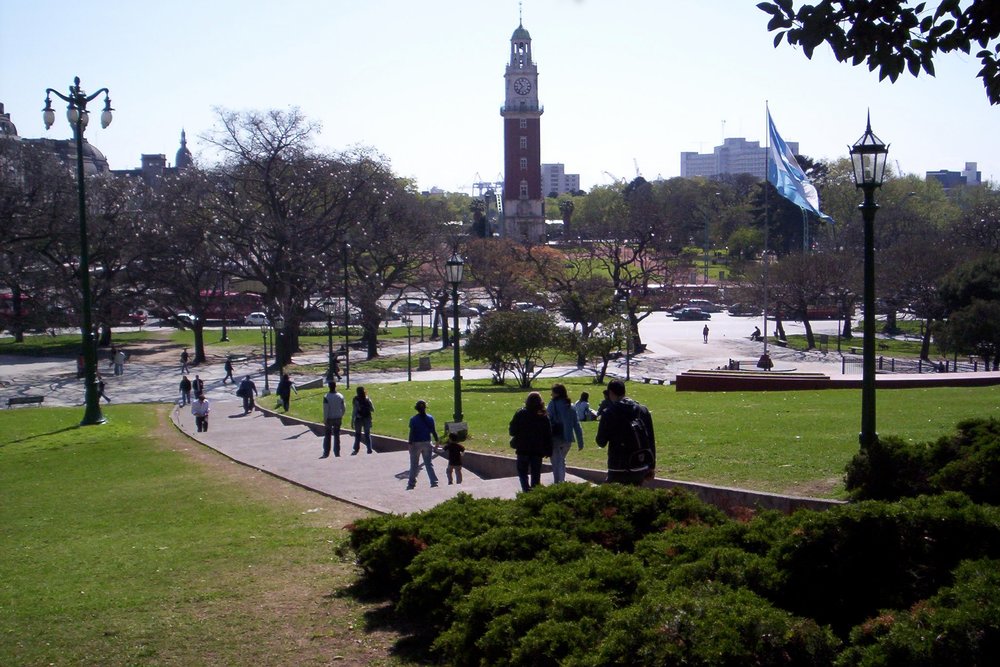
Plaza San Martín
Along this street, you’ll find the beautiful Basílica del Santísimo Sacramento, an extravagant Catholic church built in 1916, as well as the Galerías Pacifico, a high-end shopping centre housed in a Beaux Arts building, one of many that evoke the city’s “Paris of South America” comparisons.
As you continue south, switch over to the parallel Calle Florida, a popular pedestrian street, to complete your shopping fix, including a variety of very reasonably priced leather goods.
Eventually, you get to Plaza de Mayo, the centrepiece and main foundational site of the Buenos Aires, fronting the presidential seat of Casa Rosada (“Pink House”). Both are splendid sights to behold, although there were heavy construction works when we visited, which hampered the views. Speaking of construction, there’s lots of it going on right now in Buenos Aires, especially around centro – at times, it seemed like entire city blocks were being dug up!
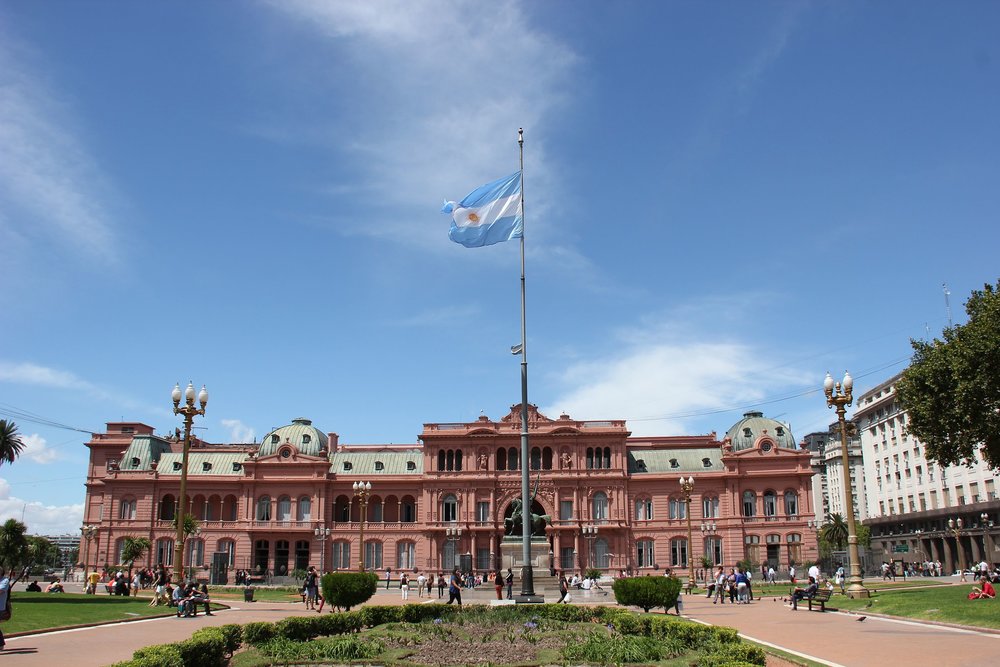
Casa Rosada
We battled bulldozers and fended off forklifts as we made our way over to Puerto Madero, the old port area that’s since been converted into pedestrian promenades and luxury condos. It feels a lot like London’s Docklands – reinvented, clean, and very, very different from the rest of the city.
On one hand, this isn’t quite the barrio that you’d come to Buenos Aires to see, given that it may as well be Toronto’s Harbourfront; on the other, it was refreshing to spend an afternoon catching a glimpse of the city’s emerging modern edge (and not having to dodge the dog droppings on the inner-city sidewalks – porteños don’t seem to pick up after their dogs!)
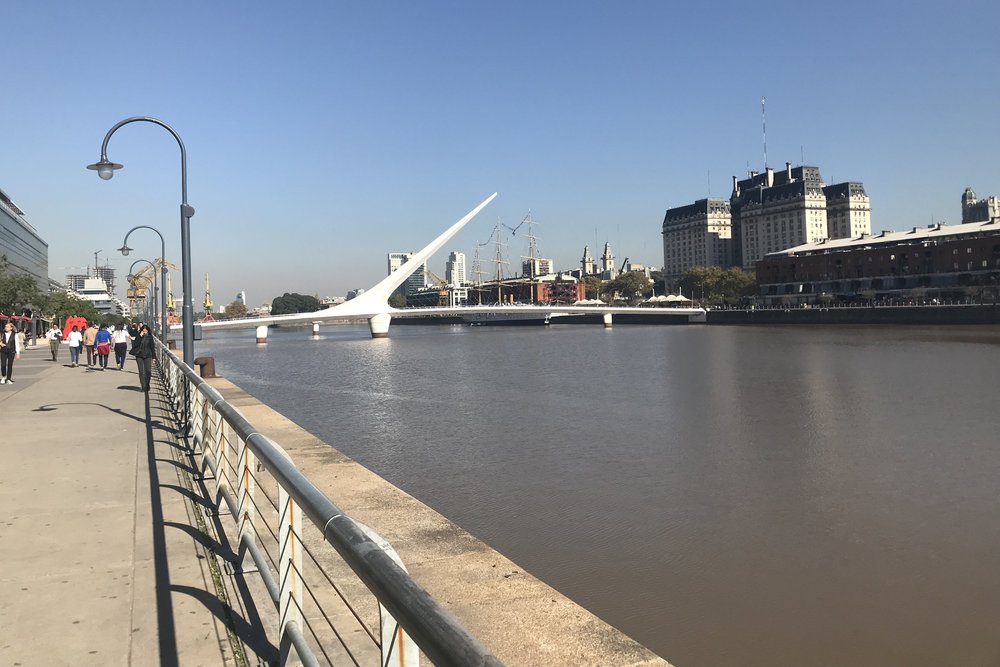
Puerto Madero, Buenos Aires
The old ships that remain in the harbour now serve as tourist attractions, and the Puente de la Mujer (“Women’s Bridge”) is a lovely sight. If you have the time and the energy, the Costanera Sur Ecological Reserve on the riverbank has some excellent trails for a sunny afternoon walk or a serene cycling trip using the city’s EcoBici bikeshare system.
Conclusion
As mixed and diverse as the city’s barrios are, so too were my overall thoughts on the Argentine capital after a four-day stay.
I loved the thrill of seeing a different side of the city every day, as well as the national enthusiasm for grilled meats in which I gladly partook every evening. However, other parts of my experience didn’t quite meet my (admittedly very high) expectations. In particular, everyone raves about how Buenos Aires looks exactly like Europe, which it does – but I kind of felt like I needed something different by the third consecutive day of remarking to myself how this place felt exactly like Madrid. If I wanted a European experience, I’d go to Europe, you know?
Ultimately, the immense diversity across Buenos Aires’s barrios made it genuinely difficult for me to capture my exact thoughts on the city in a succinct turn of phrase. It’s a place that challenged my every attempt to draw a line under it – a phenomenon that, at once, feels quite unfamiliar and leaves me very intrigued for my next visit.








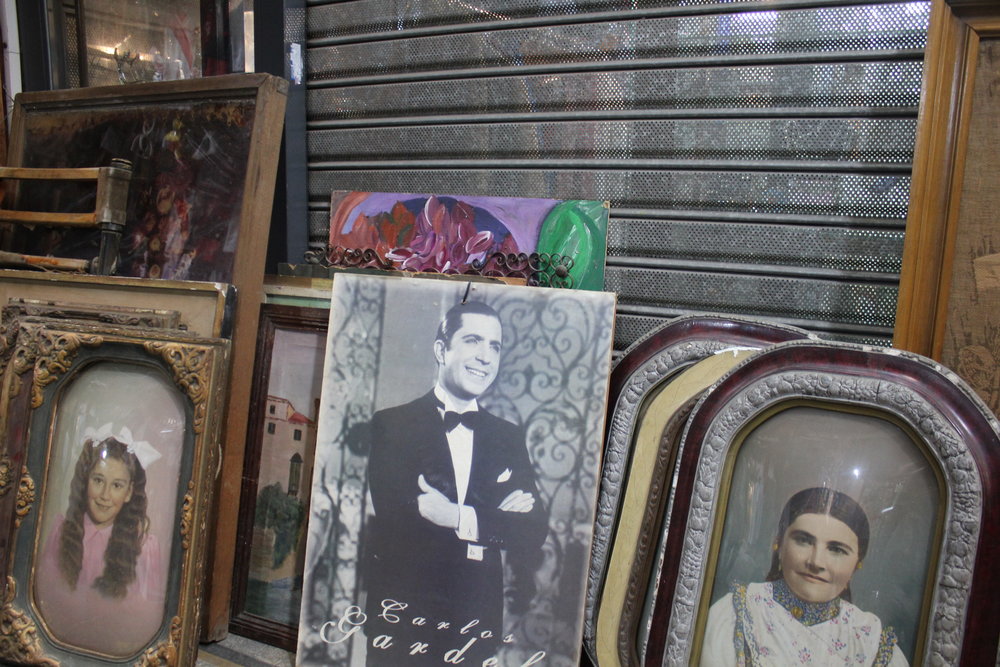


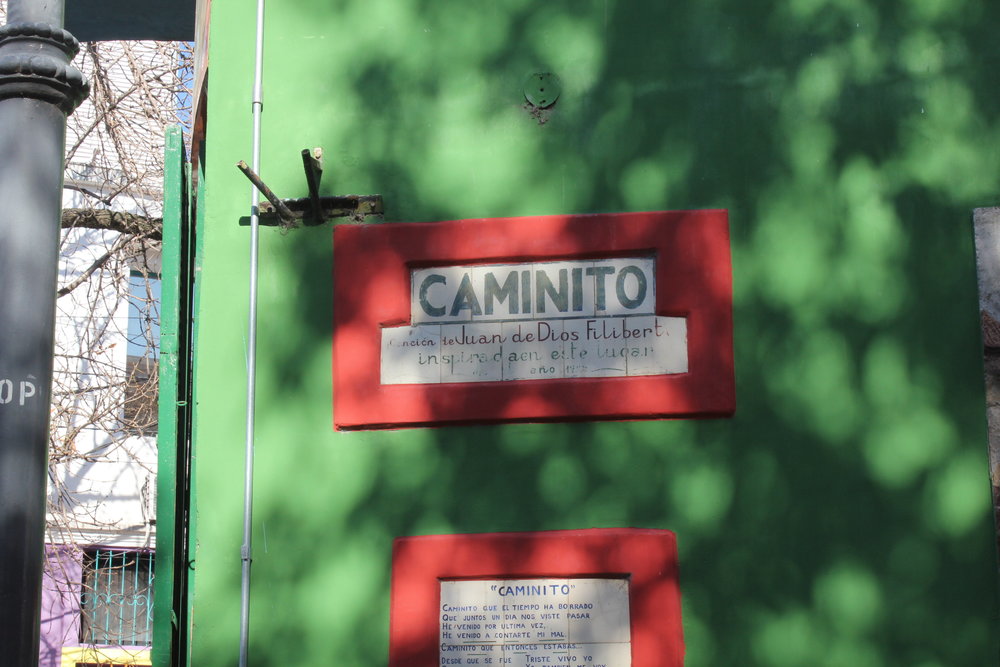
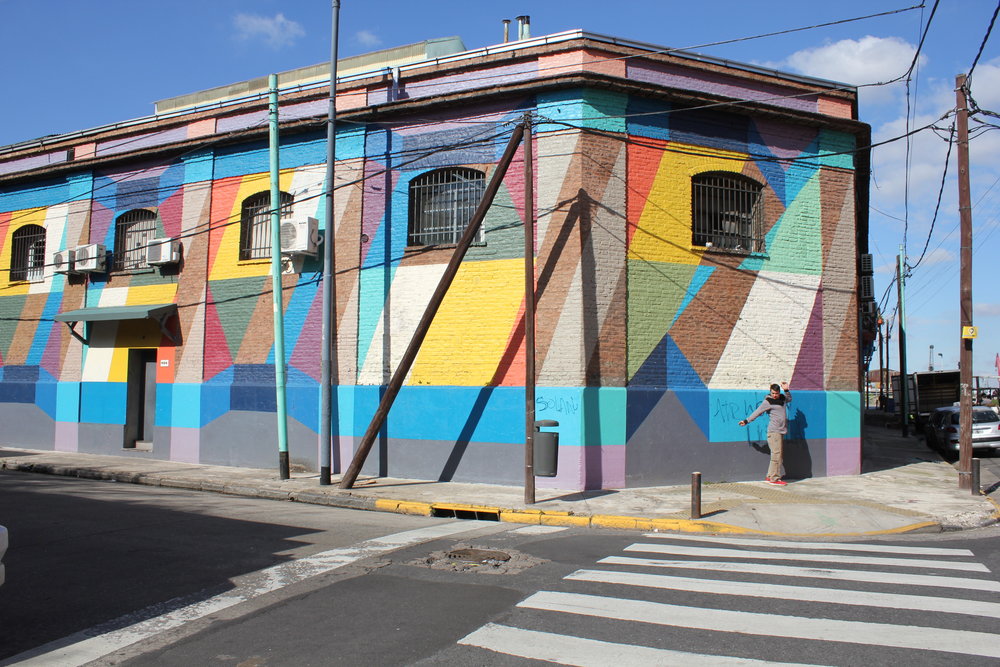













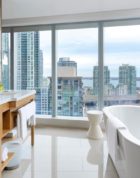

So happy to read your review! Thank you got sharing. Will be there in Nov. And you gave me some great ideas. How was the Uber situation there? Any trouble? Where did you exchange $ for the best rates? Also do most places you stopped take credit cards?
Uber is cheap and I used it all the time. A trip from Retiro to La Boca, on opposite sides of town, costs about $6-7. I had a few issues with drivers who cancelled, but they were few and far between.
I visited the cambio in Galerías Pacifico, which had very fair rates between USD and Argentine pesos. Most places took credit cards – pretty much all cafes and restaurants, shops, La Bombonera, etc. You’ll want to have some cash handy for visiting the markets though.
Feria San Temo has the best choripan…